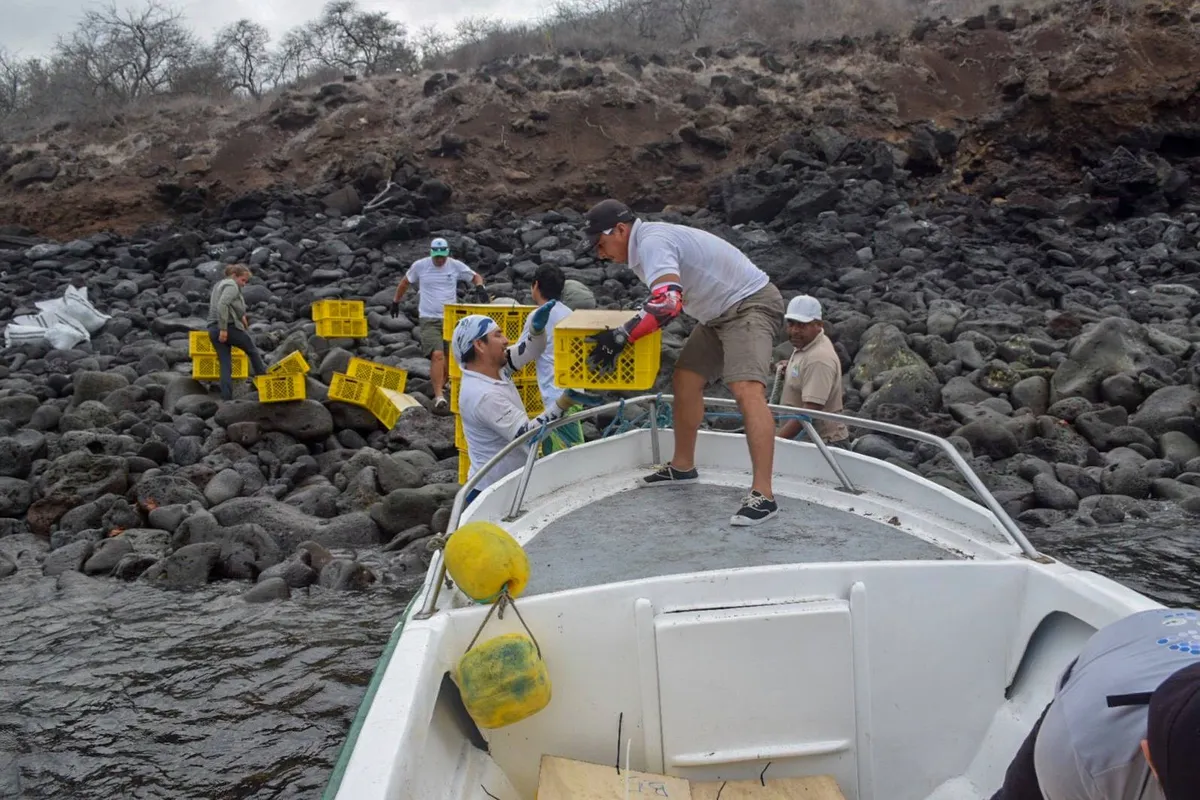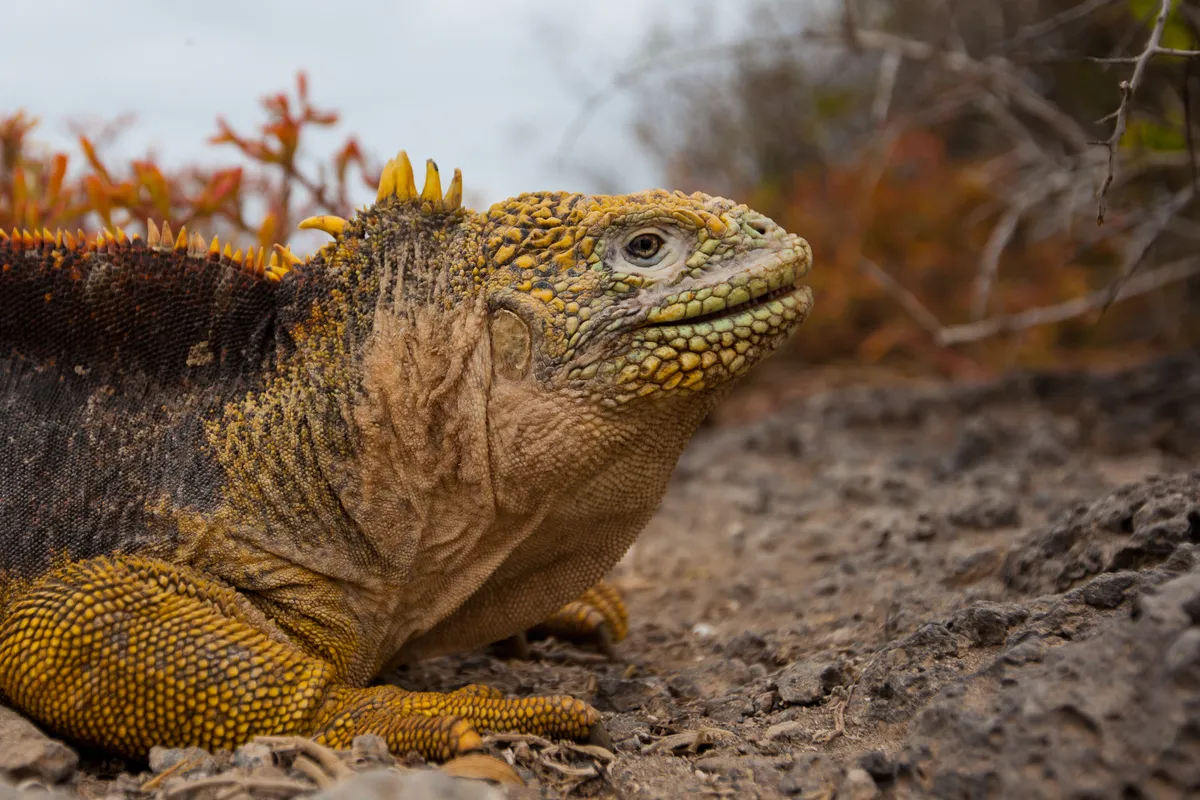In the first few days of 2019, staff from the Directorate of Galápagos National Park (DPNG) and Island Conservation released 1,436 land iguanas onto Santiago Island.
This is the first time the species, which is listed as Vulnerable on the IUCN Red List, has set foot on the island in 180 years, after becoming locally extinct due to introduced feral mammals, particularly pigs, donkeys and goats.
“This is the largest iguana population ever translocated for a reintroduction,” says Karl Campbell from Island Conservation, “and sees critical ecosystem processes like seed dispersal reinitiated for the first time in 180 years.”

The iguanas were captured in late 2018 from the population of around 5,000 individuals on North Seymour Island, where they are actually an introduced species and face a lack of food availability.
“Naturalist guides, DNPG technicians, and Island Conservation staff reported the increasing vegetation loss, particularly cacti, on North Seymour beginning in 2016,” says Danny Rueda, DNPG’s ecosystems director.
“Cacti are the land iguana’s primary food source. Relocation of iguanas will protect the North Seymour population.”
The most recent recording of this species on Santiago Island was back in 1838 by Abel du Petit-Thouars, after which only skeletal remains were found.
His was the only record to follow that of Charles Darwin in 1835, who described the iguanas as “like their brothers the sea-kind, they are ugly animals, of a yellowish orange beneath, and of a brownish red colour above; from their low facial angle they have a singularly stupid appearance.”

Between their capture and reintroduction, the land iguanas spent three to four weeks in quarantine on Santa Cruz, to ensure that any seeds intheir guts were not transported to Santiago Island.
The reintroduced iguanas will be monitored by park officials and experts from Massey University in New Zealand from February.
The reintroduction is part of a larger effort to restore Santiago Island, which is the largest island in the world to be freed of feral pigs, goats and donkeys.
Further reintroductions are in the pipeline for other islands in the Galápagos archipelago, with plans underway to eradicate invasive predators from Floreana Island and reintroduce 13 locally extinct species such as the Floreana mockingbird and Floreana giant tortoise.

